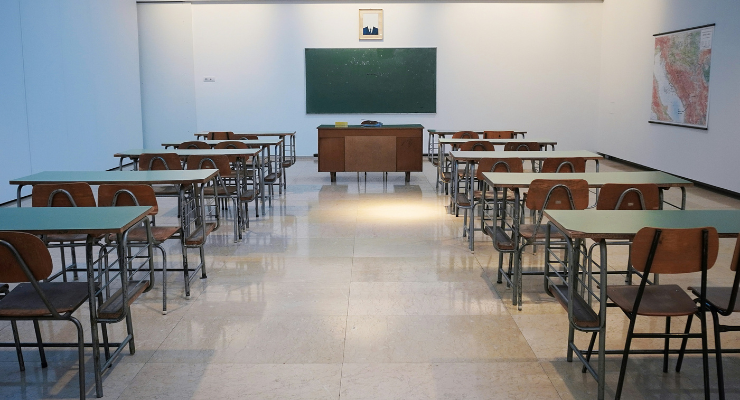Africa is no exception, with an increased demand for highly skilled workers.
Skill shortages are considered one of the most significant risks facing businesses worldwide. According to a survey by ManPower group, 2024 talent short report, attracting and retaining skilled workers is a global challenge, 75% of employers report difficulty in filling roles.

Africa faces a persistent shortage of skilled labor, which hinders its economic development and growth. This shortage can be attributed to several interrelated factors, including the limited contribution of tertiary education to the growth of skilled labor, educational system deficiencies, and mismatches between educational outcomes and labor market needs.
Several factors contribute to the persistent and increasing shortage of skilled labour in Africa, including
Limited Tertiary Education Contribution
One of the critical issues is the limited contribution of tertiary education to the growth of skilled labor. According to a report by the African Development Bank, the unemployment rate for individuals with higher education exceeds 50% in many Sub-Saharan African countries. This statistic highlights a paradox where higher education does not necessarily equate to employment. The report also indicates that many educational indicators in Africa have stagnated or even deteriorated, making it unlikely that the continent will meet its education commitments by 2030. This stagnation reflects broader systemic issues within the education sector, including underfunding, outdated curricula, and insufficient emphasis on practical skills.
Quality and Relevance of Education
Another significant factor contributing to the shortage of skilled labor is the quality and relevance of education. A study by the World Bank criticized African universities for not teaching the cutting-edge skills that employers demand. The curriculum in many institutions of higher learning is often outdated, focusing more on theoretical knowledge than on practical, marketable skills. This disconnect means that graduates are often ill-prepared for the modern workforce, lacking essential skills in technology, critical thinking, and problem-solving that are crucial for today’s job market.
Mismatch Between Education and Labor Market Needs
There is also a significant mismatch between the education system and labor market needs. Many African countries have educational systems that do not align with the requirements of the local and global job markets. This misalignment results in graduates who are educated but not employable. For instance, while there is a high demand for professionals in science, technology, engineering, and mathematics (STEM) fields, African universities often produce more graduates in fields like humanities and social sciences, where job opportunities are relatively scarce.
Structural Challenges in the Education System
The structural challenges within the African education system further exacerbate the problem. These challenges include:
Underfunding: Many African countries spend a low percentage of their GDP on education, resulting in poorly equipped schools, inadequate teaching materials, and underpaid teachers.
Inadequate Infrastructure: Many educational institutions lack the necessary infrastructure, such as laboratories, libraries, and internet access, which are essential for providing a quality education.
Brain Drain: There is a significant brain drain, where the most talented and skilled individuals emigrate to other countries in search of better opportunities, leaving a gap in the local labor market.
Teacher Quality and Training: The quality of teachers and their training is often subpar, affecting the overall quality of education delivered to students.
Policy and Institutional Weaknesses
Policy and institutional weaknesses also play a crucial role. Many African countries lack coherent policies and robust institutions to support education and labor market integration. Policies often fail to incentivize industries to invest in education and training, and there is a lack of effective vocational training programs that could provide alternative pathways to skilled employment.
Socio-Economic Barriers
Socio-economic barriers, including poverty and inequality, limit access to education for many. In rural and underprivileged areas, children are less likely to complete primary education, let alone pursue tertiary education. Girls, in particular, face additional barriers, such as early marriage and gender-based violence, which hinder their educational attainment.
Recommendations for Addressing the Skilled Labor Shortage
To address the skilled labor shortage in Africa, several strategies should be considered:
Curriculum Reform: Updating university curricula to include more practical and marketable skills, particularly in STEM fields.
Increased Investment: Governments and private sector partners need to increase investment in the education sector, focusing on infrastructure, teacher training, and educational materials.
Industry-Academia Collaboration: Strengthening partnerships between educational institutions and industries to ensure that graduates possess the skills that employers need.
Vocational Training: Expanding and improving vocational training programs to provide alternative pathways to skilled employment.
Retention Strategies: Implementing strategies to retain skilled labor within the continent, such as creating favorable working conditions and opportunities for professional growth.
Policy and Governance: Enhancing policy frameworks and institutional capacities to support education and labor market integration effectively.

SUBSCRIBE TO OUR NEWSLETTER TO GET MORE INFORMATION AND UPDATES ON STEM EDUCATION ACROSS THE GLOBE



